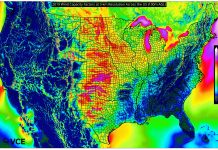GE’s Energy Consulting business presented the findings of its frequency response study on wind power and grid resiliency in late August at the CIGRE Session 45 in Paris. The study, which was sponsored by the U.S. National Renewable Energy Laboratory, modeled the country’s Eastern Interconnection — one of the largest electrical systems in the world — and determined that when equipped with the appropriate modern plant controls, wind applications can substantially enhance grid resiliency.
 Questions about how the U.S. electrical systems would respond to a large-scale interruption of generation, such as multiple power plants tripping offline, were the catalyst for the study. An event like this could result in significantly lower frequencies on the system, customer interruptions or even large-scale blackouts.
Questions about how the U.S. electrical systems would respond to a large-scale interruption of generation, such as multiple power plants tripping offline, were the catalyst for the study. An event like this could result in significantly lower frequencies on the system, customer interruptions or even large-scale blackouts.
The study explored in detail how the grid could respond to a major event and maintain its resiliency with significant wind power added to the generation mix. The conclusions of the study found that wind can be more effective than thermal generation in controlling frequency on the grid due to its ability to respond more quickly.
The study modeled a scenario where there was an instantaneous penetration of 25-percent wind generation in the Eastern Interconnection — a scenario that is an aggressive case in the eastern U.S. today. It showed that at these levels of penetration, there will be operating conditions where traditional frequency responsive resources are scarce. This is typical in systems with high levels of wind penetration.
— Source: GE



























